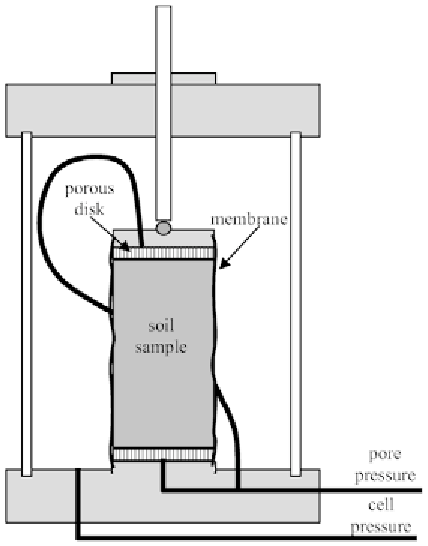Geoscience Reference
In-Depth Information
(unconsolidated-undrained) under stress or strain controlled compression or
extension. Triaxial behaviour is discussed in Chapter 7.
3
p
=
3
p
=
v
+ 2
v
+ 2
h
h
q
=
v
h
q
=
v
h
failure
surface
failure
surface
q
q
pore
pressure
pore
pressure
effective
stress
path
effective
stress
path
total
stress
path
total
stress
path
p
p
isotropic
stress path
isotropic
stress path
Figure 3.5 Triaxial test apparatus and the pq-diagram for a triaxial compression test
Density tests
An important method for soil improvement is densification, and three methods
are distinguished: mechanical densification, preloading and dewatering. Specific
laboratory tests are designed to evaluate the effect in the field.
The porosity
n
or the voids ratio
e
is an essential parameter, which determines
the matrix density. For granular soils the density is expressed by the relative
density
D
r
but it is often not very accurate. The minimum density of sand can be
determined by the dry method (carefully depositing oven-dried sand) or the
sedimentation (floating) method in water. The critical density of sand refers to the
density, for which there is no volume change when subjected to shear deformation.
A strain-controlled shear test is applied to measure the volume change during shear
deformation. Dense granular soils may show an initial increase (dilatancy) of
volume during shear and loose soils a decrease (contraction), which is related to
properties of a granular skeleton. For large deformation the soil attains the critical
density. Since during dilation or contraction of saturated soil the pore volume
changes, pore water pressure changes may occur, which may increase or decrease
soil stability. This is of particular importance, when assessing liquefaction of sand
or undrained shear strength of clay (contraction), see Chapter 16.
































































Search WWH ::

Custom Search